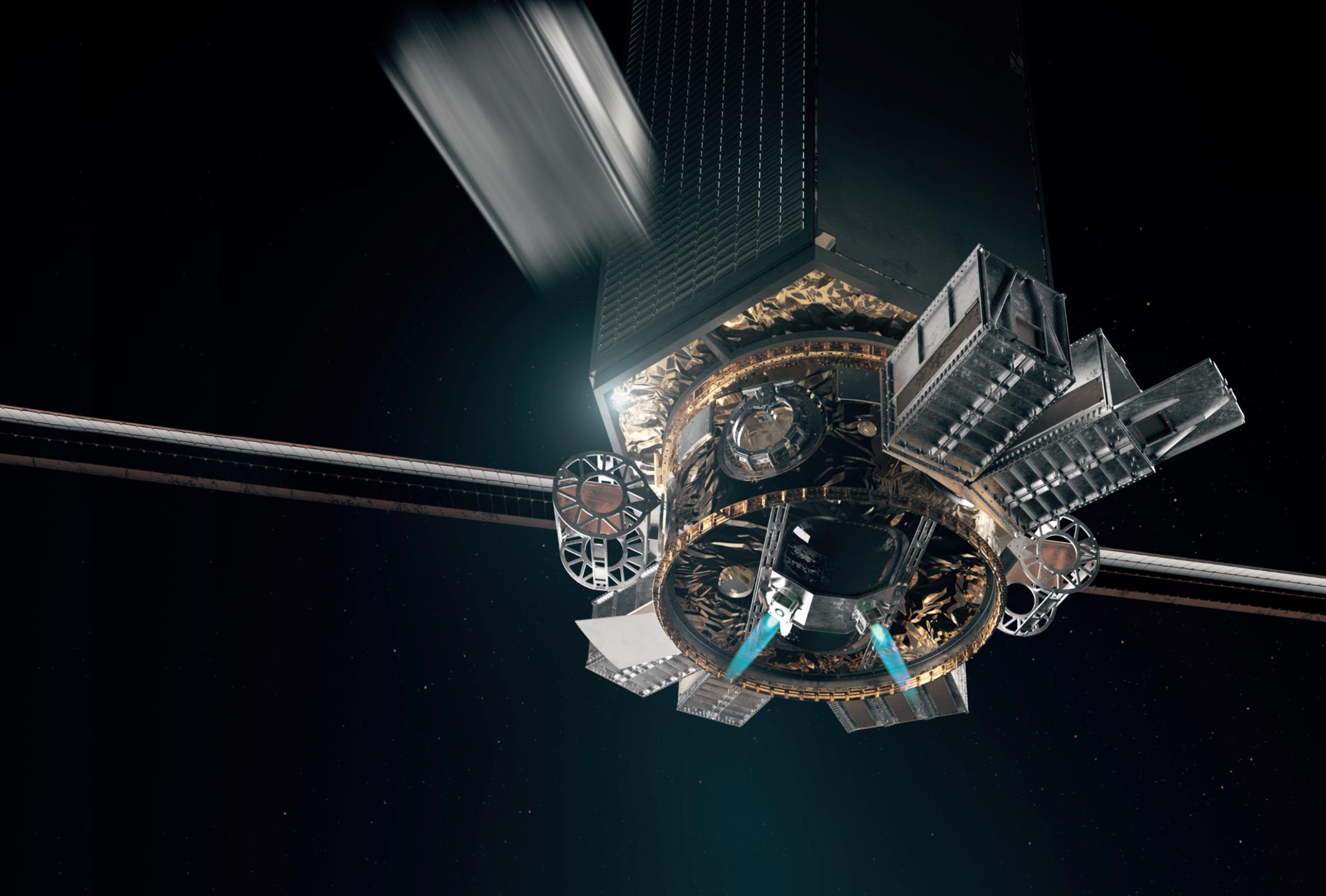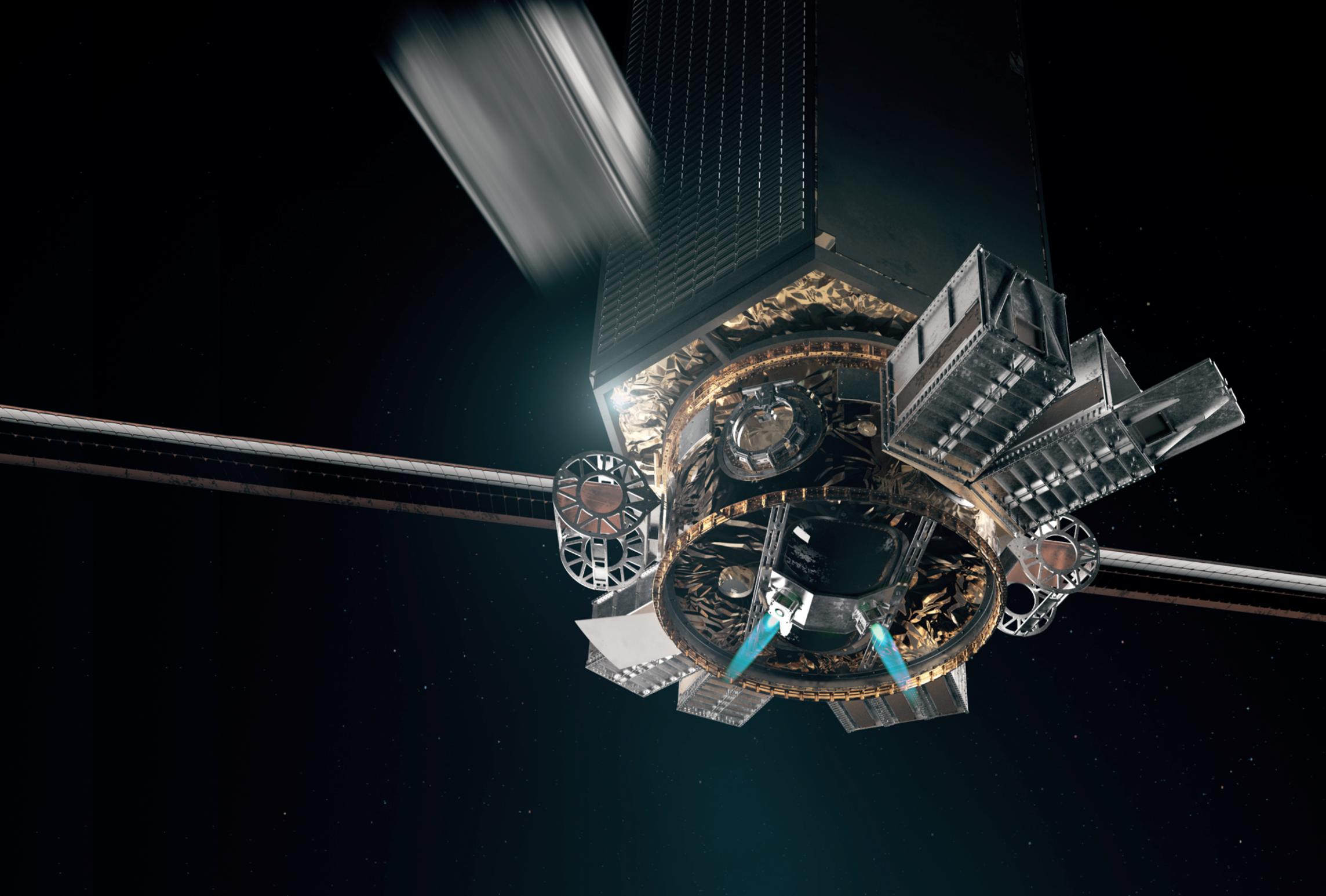
Firefly Aerospace’s Unique Space Utility Vehicle
Many launch vehicles in the space industry especially including small-lift launch vehicles are often limited by the distance and power needed for specific orbits. There is a large list of orbits each providing different benefits that the small satellite market wants to access. For this reason, Firefly Aerospace is working on a Space Utility Vehicle or SUV, meant to solve this exact problem.
Firefly Aerospace’s Space Utility Vehicle is a vehicle that expands the possibilities and options when delivering satellites into orbit and beyond. The Space Utility Vehicle does this by providing additional propulsion, unique capabilities, and multiple variants. Each aspect works together to enhance the reach and options when launching cargo on rockets such as Alpha.
This small addition can end up being a big game-changer for not only Firefly Aerospace but many different companies within the small satellite market. It also helps provide a solution that is very cost-effective and simple when compared to creating and launching a larger or more powerful launch vehicle. This option is so effective other companies including Rocket Lab are doing something similar as well.
What Is The Point Of The Space Utility Vehicle?

There is only so much power and capabilities provided by different launch vehicles. This can especially be the case with small rockets such as Firefly Aerospace’s Alpha launch vehicle. However, companies often need to launch their satellite to a very specific orbit. Each orbit has different benefits and challenges that come with it. One of the challenges can often be the distance. So much of a launch vehicle’s size and propellant goes into just getting out of Earth’s atmosphere. Once in space, additional propellant or propulsion is needed to deliver a customer’s satellite to the correct orbit. This is exactly where the Space Utility Vehicle comes into play.
The point of Firefly Aerospace’s SUV is to provide access to orbits a small launch vehicle could never access before. Positioned within the fairings, once the primary stages of the rocket are out of propellant and disconnected, the Space Utility Vehicle takes over and goes the final distance with the payload. This solution is not only a lot simpler and faster but also saves companies such as Firefly Aerospace a lot of money. The process of developing, manufacturing, testing, and using a bigger and more powerful launch vehicle takes a lot of time and costs a lot. The SUV is a simple solution in comparison that expands Firefly Aerospace’s launch capabilities and provides an appealing service to many companies within the small satellite market.
Space Utility Vehicle Features
Propulsion & Description – One of the first main features of Firefly’s Space Utility Vehicle is propulsion. The SUV is a solar-electric third stage of Firefly’s Alpha and Beta launch vehicles. The vehicle provides in-space propulsion and can even serve as a payload bus for missions lasting up to five years. The Space Utility Vehicle can reach much higher altitudes and inclinations than the launch vehicle by itself. Additionally, it provides payload support and services for up to 5 years, including high power 0.4 to 5 kW, up to 150 Mbps downlink, and altitude control. This can not only help get cargo to further orbits but also simplify the process significantly for the small satellite market.
A lot of work and complicated features can be avoided by using Firefly Aerospace’s SUV to their advantage. This vehicle is also capable of major trajectory changes. A lot of these features are thanks to the size and build of the Space Utility Vehicle. The SUV sits within the launch vehicle’s fairings attached to the cargo. The vehicle is 18in tall, 40in wide, has a dry mass of 140kg, and is primarily made out of carbon fiber. It consists of a primary circle core with two solar panels that extend once in space to provide power. In the center of the core, there is a propellant tank along with 1-4 thrusters depending on the mission. These features also help provide deployment of payloads at multiple planes, orbit tuning, deorbiting the payload, and sustained super-low orbits.
Capabilities – The next important metric to look at is the Space Utility Vehicle’s specific capabilities. When paired with the Alpha launch vehicle, the SUV delivers substantially more payload mass for missions exceeding 2000 km. Specifically, up to 600 kg can be delivered to geostationary orbit and up to 500 kg can be delivered to lunar orbit. The Space Utility Vehicle is also well suited to high energy missions including many changes in inclination. It can carry a single large payload along with up to 4 secondary payloads. Additionally, the SUV can be stacked with multiple deployment rings for a greater number of secondary payloads. It can even be stacked with additional SUVs for increased mission capability. This is a very unique feature that adds to the Space Utility Vehicle’s benefits and uses.
Variants – The last feature of Firefly’s SUV that I want to mention is the multiple variants. There are practically unlimited options in space for destinations, each with a different challenge in getting and supporting that orbit. This is exactly why Firefly Aerospace has multiple variants of the Space Utility Vehicle. One of the main variants is the low Earth orbit vehicle. The LEO SUV employs a 400 W solar array and commercial off-the-shelf avionics. This vehicle is a high-value low-cost solution for payloads operating in the low-radiation environment below 2000 km. It can also help keep a satellite or other cargo in space when orbiting very low or close to Earth. The next variant is the extended range SUV. This variant is for satellites with a destination above 2000km or which require rapid transit between trajectories. Some of the main differences include additional support and protection against radiation. The extended-range SUV operates at 2–5 kW and is tolerant to radiation dosages exceeding 90 krad. The major benefit being this vehicle can operate at nearly any altitude or inclination as far as cislunar space.
Future Impact

The Space Utility Vehicle has two major benefits that have a positive impact on the future. The first is Firefly Aerospace’s capabilities along with the impact on time and money. As I mentioned prior, launch vehicles are often limited in which orbit they can reach. This can especially be the case for smaller launch vehicles such as Alpha. The SUV changes this in a simple and cost-effective way. While Firefly Aerospace has many different plans for the future with different larger and more powerful launch vehicles, these options still need a lot of work and time. The Space Utility Vehicle gives Firefly Aerospace a lot more options without creating or changing a current launch vehicle. This will end up saving the company a lot of money and time throughout future years.
The other big impact on the future has to do with the small satellite market. The SUV not only gets cargo to different orbits that were not originally accessible but also can help support a satellite for a long period of time. A lot of work goes into the satellite development, manufacturing, and launch process. This option will help simplify the process for different companies creating satellites. This will likely cause more launches to happen and improve our access to space. Small satellite companies won’t have to build all the technology because companies such as Firefly Aerospace are offering the Space Utility Vehicle.
Conclusion
There are practically endless options in space. However, many launch vehicles including small-lift rockets are not capable of reaching these distant orbits. At the same time, it can be very costly and timely trying to upgrade or create a new launch vehicle that is capable of these far orbits. That is why Firefly Aerospace is developing and working on the Space Utility Vehicle. This vehicle will help expand mission capabilities thanks to added propulsion, unique capabilities, and different variants. All work together and help improve the options of launch vehicles such as Alpha. We will have to wait and see how successful the vehicle is and its impact on the space industry.
